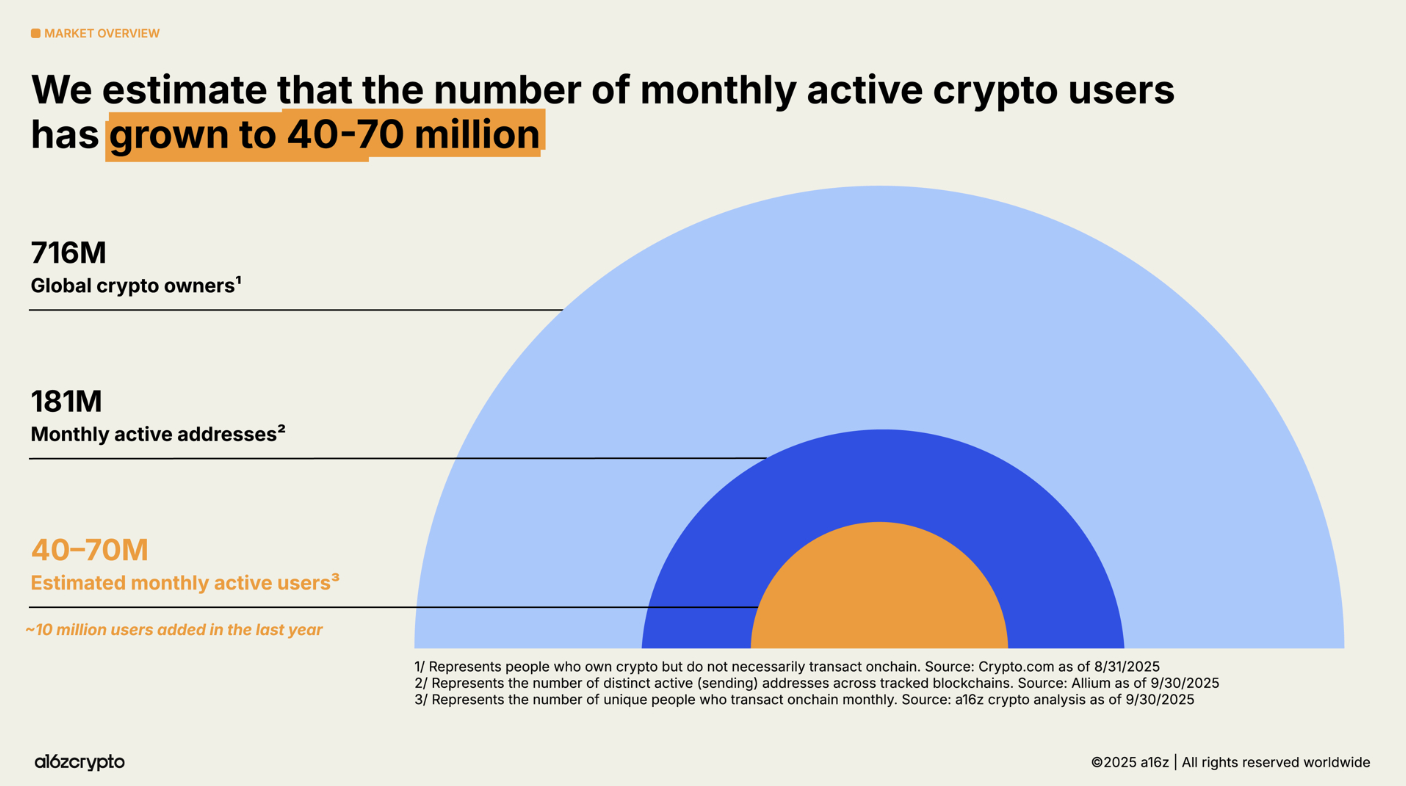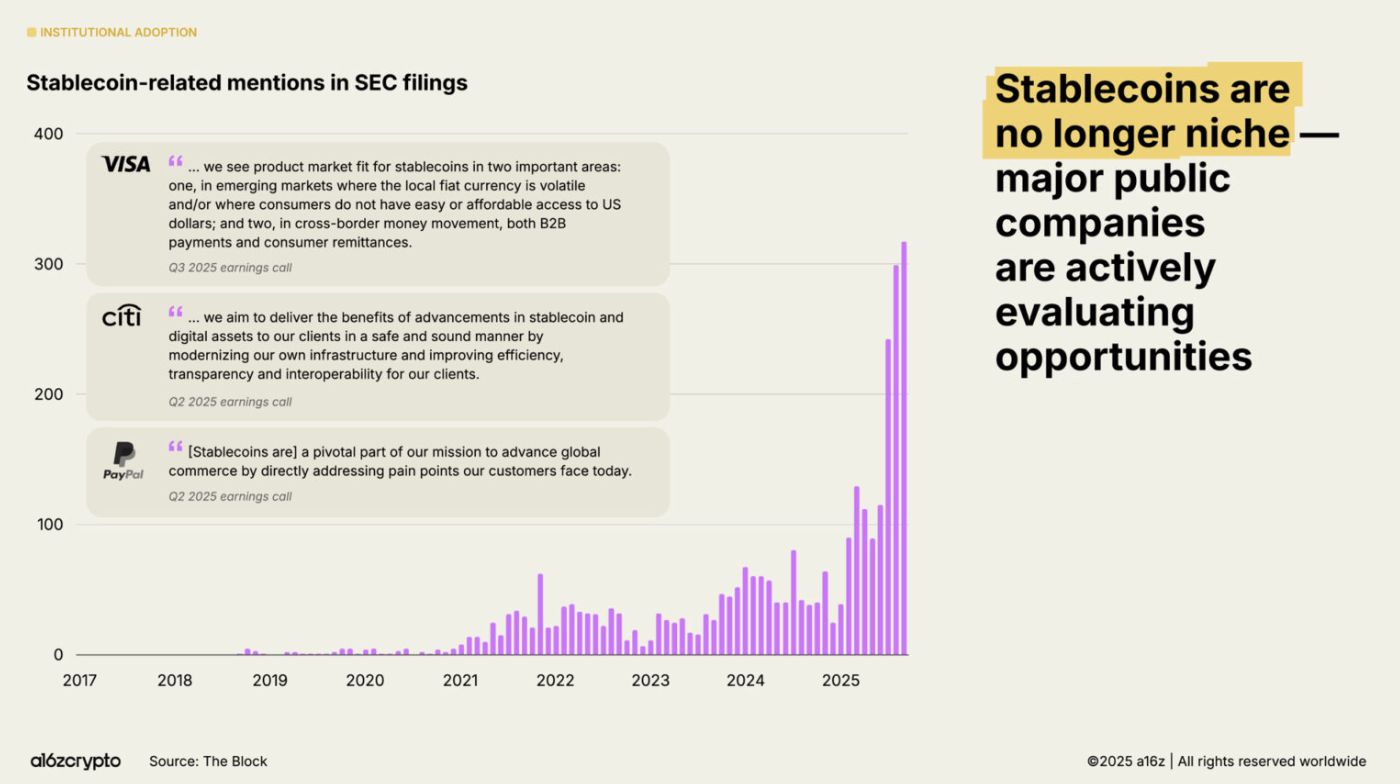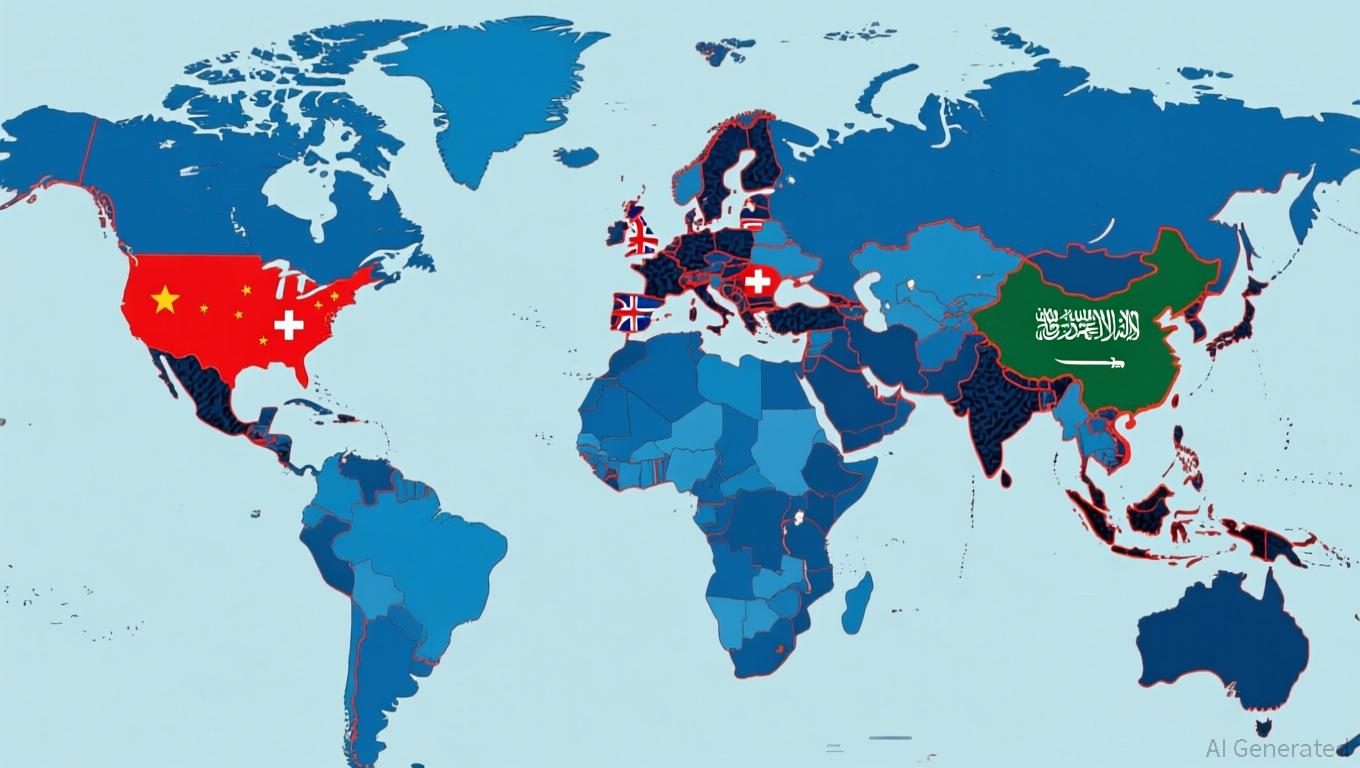a16z Calls 2025 ‘the Year the World Came On-Chain’ in New Report
Andreessen Horowitz’s 2025 report declares crypto a global financial system, driven by institutional inflows, $46 trillion stablecoin transactions, and AI-linked innovation, marking a turning point where blockchain economics integrate into mainstream finance.
The cryptocurrency industry has grown from a niche experiment into a maturing global market, according to VC Giant a16z’s State of Crypto 2025 report released Wednesday.
“This is the year the world came on-chain,” the authors wrote, describing a feedback loop between prices, innovation, and participation. Bitcoin holds more than half the crypto market cap, while stablecoins rival Visa in volume.
Institutions and Stablecoins Drive Structural Shift
According to the a16z report, this transformation is being fueled by major institutions and stablecoin adoption. Circle’s market cap climbed past $50 billion after its IPO.
BlackRock expanded tokenized money-market funds, and Fidelity began testing a USD-pegged stablecoin. Morgan Stanley plans to add crypto trading on E*TRADE in 2025. They join JPMorgan, Visa, Stripe, and PayPal, which are embedding blockchain rails across payments and asset tokenization.
 Monthly Active Crypto Users Growth. Source:
a16z
Monthly Active Crypto Users Growth. Source:
a16z
Bitcoin and Ethereum ETFs now hold more than $175 billion in on-chain assets. Publicly traded “treasury companies” such as Strategy Inc. have added billions in reserves, treating digital assets as balance-sheet instruments.
Stablecoins have become the market’s main engine. a16z estimates they processed $46 trillion in transactions last year—more than double PayPal and nearing ACH levels. Issuers like Tether and Circle now rank among the top U.S. Treasury holders, surpassing nations such as Germany and South Korea. Analysts say this could strengthen the dollar as regulatory clarity improves under the GENIUS Act and the upcoming CLARITY Act.
 Stablecoin Institutional Adoption. Source: a16z
Stablecoin Institutional Adoption. Source: a16z
From DeFi to AI: Crypto’s Expanding Frontier
Decentralized finance now captures roughly 25% of spot trading as users migrate from centralized exchanges. Tokenized real-world assets, including Treasuries and corporate bonds, have exceeded $30 billion, while decentralized infrastructure networks such as Helium demonstrate viable revenue generation.
Blockchain throughput has reached 3,400 transactions per second—approaching credit-card scale. Solana and Ethereum’s layer-2 rollups anchor this performance, supported by advances in zero-knowledge proofs and quantum-resistant encryption.
The report spotlights the rising intersection of AI and crypto—from identity verification (17 million users on Worldcoin) to decentralized compute marketplaces hosting over 420,000 models. a16z says this convergence addresses AI’s centralization risks and opens new token-driven revenue loops: $33 billion in user fees last year produced $18 billion for projects and $4 billion flowing directly to tokenholders.
The firm predicts policy frameworks prioritizing market structure, surging stablecoin adoption, and “AI-crypto” applications anchoring the next era of internet infrastructure.
Disclaimer: The content of this article solely reflects the author's opinion and does not represent the platform in any capacity. This article is not intended to serve as a reference for making investment decisions.
You may also like
Switzerland Delays Crypto Information Exchange Pending International Coordination
- Switzerland delays crypto tax data sharing with foreign nations until 2027, citing unresolved CARF partner agreements. - The OECD's 2022 framework requires member states to exchange crypto account details, but 75 countries including the EU and UK face implementation challenges. - Transitional measures ease compliance burdens for Swiss crypto firms while awaiting finalized international data-sharing protocols. - Major economies like the U.S., China, and Saudi Arabia remain outside CARF due to non-complian

Bitcoin Updates: SGX Addresses Offshore Perp Shortfall as Bitcoin Decline Increases Demand for Hedging
- SGX launched Bitcoin and Ethereum perpetual futures, becoming a first-mover in regulated onshore crypto derivatives to meet institutional demand. - The $187B/year perp market, dominated by Asia, now gains a regulated alternative to offshore platforms with SGX's 22.5-hour trading window. - Perps enable hedging during Bitcoin's 2025 downturn, with SGX's margin-call system prioritizing investor protection over instant liquidations. - Regulatory caution limits access to accredited investors, aligning with gl

Bitcoin News Update: Institutional ETF Adjustments Challenge Key Bitcoin Support Thresholds
- Analysts warn Bitcoin faces 25% drop risk if key support levels fail amid shifting institutional ETF dynamics. - Texas's $5M IBIT purchase highlights growing government interest, but ETFs fall short of direct BTC ownership criteria. - Technical analysis shows Bitcoin trapped in a broadening wedge pattern, with breakdown below $80,000 risking $53k decline. - Institutional rebalancing sees $66M IBIT outflows vs. $171M FBTC inflows, signaling tactical ETF rotation over accumulation. - Abu Dhabi's $238M ETF

XRP News Today: IMF Cautions That Rapid Tokenized Markets Could Intensify Crashes in the Absence of Regulation
- IMF warned tokenized markets like XRP could worsen flash crashes without regulation, citing risks from decentralized systems lacking traditional safeguards. - Report acknowledged tokenization's potential to cut cross-border payment costs but highlighted volatility risks from rapid liquidity loss seen in crypto markets. - SEC's approval of crypto ETFs signals growing institutional acceptance, though regulators emphasize oversight frameworks to mitigate systemic risks. - IMF proposed a global digital marke

